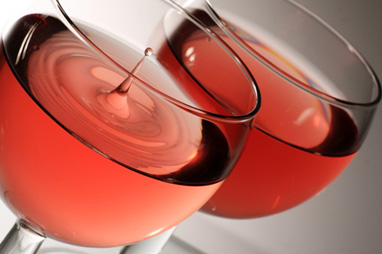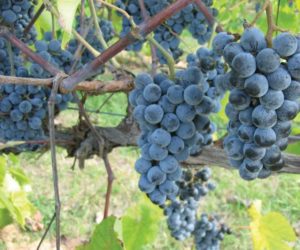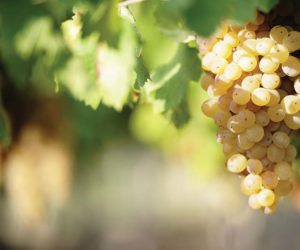
In the summertime, many of us gather with family and friends around the barbeque. The chefs boast their talent amid the billowing smoke and the guests quaff a few glasses of wine to quench their thirsts, all the while wondering if the meat will come off recognizable and what wine pairs well with the blackened quarry. While not all barbeques go this way, I’ve seen a few in my family which resulted in years of ribbing, if you’ll pardon the pun, about the time the Weber grill served as a crematorium.
That time of year, I am often asked which wines would pair well with the grilled meats and vegetables, burned or not, and I almost always offer the same suggestion — rosé.
I like — in fact, really like — the rosé style. In the heat of summer, red wines, while complementing most grilled foods, are too heavy and not refreshing as a thirst quencher. White wine can quench your thirst, but different whites pair best with different specific foods, and thus there is no single white that will work reliably in most situations. (Well maybe a German Riesling, but that’s not what I’m here to write about.)
The rosé is a simple, light-colored and light-bodied “red” wine, that’s dressed up to make it a white wine. The style is produced from a plethora of red grapes and most of the varieties pair well with beef, lamb, chicken, pork, fish or vegetables. These “pink” wines, when served slightly chilled are refreshing to the palate, as well as complementing the food with its refreshing acidity and bright red fruit characters.
The Styles of Rosé
Rosé is a wine style that has experienced increased popularity in recent years. While this style has been made by winemakers in the Rhône and Champagne regions of France for a long time, it has only been in the last thirty years or so that the style has been commercially produced in the United States, and other wine-producing countries, in any appreciable quantity. The style most familiar to us is that of white Zinfandel, made popular by Sutter Home Winery in the 1980s. Other varieties were tried in the style such as Cabernet Sauvignon and Merlot, which were marketed as either blush or White Merlot. However it was white Zinfandel that went on to typify, for many, the rosé wine world. This sweet wine was identifiable by name, and easy to pronounce as well. “Blush” meant a lot of things and “White Merlot” just didn’t have a good ring to it.
In the late 1990s, there were rosé wines produced from Sangiovese, Pinot Noir and Syrah. These new rosés were not made in the white Zinfandel style (which was typified by early harvest, residual sugar at 1–2% with perhaps some Muscat blended back). What made these new rosé style wines stand out, was that the fruit was mature at harvest, and the wines were mature, dry or slightly off dry, and fruit forward, much like the original rosés of France and California. The wineries producing the new styles had one heck of a marketing image to overcome due to the immense popularity of the sweet version of white Zin. Enough to impose almost a stereotype on anything pink. In essence, rosé was the subject of enological profiling. The challenges facing the producers of the new rosé wines was to get white Zin detractors to even get it in a glass at the tasting bar. The true wine lovers, once convinced it was indeed not white Zin, focused on the exceptional quality and refreshing change it offered and the style took off, albeit mostly in the form of limited production wines in order to sell out of the current vintage, so that the market was prepared to receive the new vintage the following spring. I like to think of it as the equivalent to the Beaujolais nouveaux release in November, only with this release happening in the spring (although the American wine marketers don’t generally follow this trend). The producers focus on limited production levels to keep the wine fresh, producing only enough to make it to the next vintage in most cases.
Making Rosé
There are three main methods of making rosé. The principle behind rosé is developing some color in the juice. All red grapes of Vitis vinifera, except for those teinturier varieties, have white juice. Through some form of skin contact, the anthocyanins — which compose the red or purple color in the skins, — are extracted into the juice.
Blanc de Noir
Color extraction is achieved through one of two methods of winemaking. The first, blanc de noir, refers to the making of a white wine from black grapes. We see this term commonly on the labels of sparkling wine bottles. What it’s telling us is that the grapes that went into the making of the sparkling wine were probably Pinot Noir or Pinot Meunier. Essentially red grapes that were made into a white sparkling. Some color may be evident, but that is not the goal in the style.
The process of blanc de noir, involves crushing and pressing the grapes after little skin contact. Essentially, the must is pumped to the press and the press cycle is started. The juice is collected and fermented chilled, just as you would with a white wine. There is some color extraction depending on the variety used. For example, Pinot Noir or Sangiovese yielding lighter color juices than those of Syrah or Tempranillo. Vineyard or grape variety and maturity goes hand in hand with good color development of the wine.
Saignée
For a rosé style in which more color development is desired, the winemaking technique of saignée is employed. Historically the process is part of a red winemaking style to improve the juice to skin ratio, thus resulting in better color in the red wine. Saignée is the French term for “to bleed.” In this case, you crush the fruit and the juice is allowed to stay in contact with the skins and seeds for some period of time. The saignée is then moved to a cool tank for fermentation and is treated as a white wine. The time left on skins is very dependent on the rate of color extraction, temperature and desire for color in the final product, but generally this period is no more than 24 hours. The longer the contact with the seeds, the more seed tannin that can be extracted leading to increased bitterness and astringency, although this is not usually a problem given the short maceration time. If there is a determined desire to make rosé from a variety that is not yielding its color, enzymes can be employed to assist in dissolving the skin of the grape and releasing its contingent of anthocyanin molecules to the juice.
The winemaking process after the juice is produced should mimic that of a white wine. Your goal is a clean, fruit forward wine with crisp acidity. Although prevention of the malolactic fermentation (MLF) is the rule with my white wines, some would prefer to induce a partial or full MLF, but that is the preference of the winemaker. Cold settling the juice off the gross solids, racking the juice and fermenting at a temperature around 60 °F (16 °C) are critical to developing those fruity esters that make a rosé. The term “fermentation bouquet” is another term for esters. Esters are the result of wine acids reacting with alcohols (mainly ethanol) during the fermentation.
Fermenting at cooler temperatures increases ester retention, and keeping the wine cool — up to and post bottling — will help maintain the esters. Yeast choices play a significant role as well. Choose a yeast strain that is decribed as having the effect of enhancing esters.
Blending
Another technique is the blending of white and red grapes, which was a practice in the Champagne region of France — and much to my chagrin, my father-in-law’s kitchen. In modern times, blending is generally not used now, except to improve color qualities of the wines made through the extraction process. However, this is no reason that it could not be tried at home. Likewise, you can blend a finished red wine into a finished white and produce a rosé in that manner. When doing this, you can even taste test various blending proportions before blending the wines in bulk — something you can’t do when you blend grapes.
There is also the unusual position of having produced a red wine that just did not cut it with respect to color. In reviewing this year’s vintage with my colleagues, one of them referred to a particular red Zinfandel that could pass for a rosé if need be. This would be the one technique I would not advise you to try at home.
Varieties
Rosé can be made with any red variety, although some grape varieties are better suited than others. A quick glance at the shelf in the wine section of your local bottle shop or supermarket yields rosés of Pinot Noir, Cabernet Sauvignon, Merlot, Syrah, Sangiovese and Tempranillo. As I always caution, one must use clean, mature fruit regardless of the variety. My first experiences with rosé were with Sangiovese and Syrah. What a way to start learning with two distinctly different grapes. Sangiovese is a color struggle while Syrah generally does not have a problem with color. With the latter, careful monitoring of the extraction process must be maintained to keep from too much color extracted. With the former, the production of the rosé is often done to improve the color for the red wine version, thus color development is secondary and adjusted perhaps later in the process with the small contribution from some neutral red wine. I found that the Sangiovese wines were better behaved during fermentation. The yeast were generally happy and there was good development of color and subsequent color stability, though some enhancement was necessary in some vintages. With every Syrah rosé I have made; I experienced the same problem of sulfide development during the fermentation, despite the use of the same cooler temperature yeasts, nitrogen supplements and aeration during fermentation. The wines cleaned up well post fermentation and were very enjoyable, but this experience was like Jekyll and Hyde.
Final Perspective
From a home winemaking standpoint, how do we put all this into perspective? When bringing in the fruit, make sure you are in a time frame that you can spend time monitoring the extraction period. You need adequate refrigeration capacity to ferment at low temperatures. You must maintain sanitary cellar practices, and bottle within 4–8 months of the wines inception with the goal of consuming all prior to the next vintage. No saving a bottle here and there. Rosé almost always should have the mystique of the nouveau wines. They have a very short duration here on earth and then it’s on to the next vintage.






